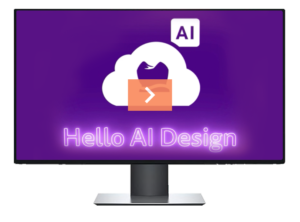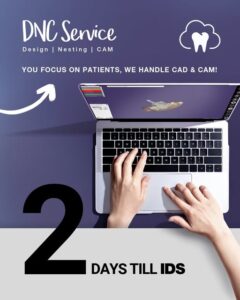CAD-CAM Dentistry is just Dentistry.
It’s not niche, it’s not for mad scientists.
I am writing this piece from the picturesque city of Maastricht, just over the border from Belgium in the Netherlands. Maastricht was once famous for its ceramic artisans, reaching its peak in the mid-1800s with the establishment of what became Sphinx Ceramics. At its height, 70% of the city’s inhabitants were employed in ceramics production, largely by hand.

Then two things happened: competition and industrialization. The post-WWII economic boom forced once-proud artisans to pivot towards producing toilet bowls. At the same time, industrialization introduced more efficient methods, increasing automation and reducing human intervention.

As we stand on the eve of IDS Cologne, it’s clear that CAD-CAM dentistry is undergoing a similar shift. Restorative dentistry, led by CAD-CAM technology, is evolving rapidly through automation, AI, and new manufacturing techniques. The industry is not moving toward some distant digital future—it’s already here, transforming how dental professionals operate.
What do dentists really want—or rather, what do they want to avoid? Let’s break it down in the context of chairside CAD-CAM:
- A patient needs a crown on a compromised tooth.
- The dentist prepares the tooth.
- The dentist scans the dentition using an intraoral scanner.
- The dentist designs the crown in CAD software.
- The dentist mills the crown using a chairside milling machine.
- The dentist post-processes the crown (polishing, glazing, etc.).
- The dentist cements the crown in place.
Step Less
Now, let’s talk about the real future: fewer steps. Every artisanal process in history has been simplified through automation. CAD-CAM Dentistry is no different.
The two steps dentists dislike the most? CAD design and post-processing. If you love every step of this process, you’re either in the minority or pretending to be. The reality is, most dental professionals want crowns produced with minimal hassle.
So, what will we see at IDS Cologne this week?
More step removal. Duh.
Exocad is pushing AI-driven CAD software, reducing the need for manual design intervention. Alongside iTero and Invisalign, exocad is making CAD design faster and more intuitive.

Focus on your patients?

Imes-icore is launching a platform that allows users to focus on patient care rather than complex software, leaving the design and nesting process to them—with AI lending a hand. Obviously, this works hand-in-glove with our CLAUSS Clinical CAD-CAM systems.
Asiga have been busy!
They’ve introduced Genira, an automated model-building software. Because, let’s be honest—no one likes designing models. And no one enjoys nesting objects in CAM software, which is why Asiga is also unveiling Funnel, an automated 3D printing setup and production management tool.
Lazy buggers? Better at their jobs? Well, that depends.
Clearly, these innovations are making CAD-CAM dentistry more efficient. But are dentists and technicians getting lazier? Absolutely not. History tells us that automation doesn’t make professionals lazy—it makes them more effective.
Obviously, the sewing machine didn’t make all tailors obsolete, and welding tools didn’t eliminate blacksmiths; they just allowed them to work smarter and produce more.
Better Dentists? With CAD-CAM
Will this technology make dentists better? That depends on how they use it. Consider iTero Timelapse technology: by comparing scans over time and using color mapping, dentists can track gingival recession, bruxism, and other conditions far more effectively than traditional charting.
iTero Lumina Pro Brochure – see more here.
The impact of these advancements extends far beyond convenience. Increased automation reduces human error, streamlines workflows, and improves treatment outcomes. It’s not about replacing dentists—it’s about empowering them.
Driving it.
At XYZ Dental, we are driving this transformation alongside the leaders in CAD-CAM technology: exocad, imes-icore, iTero, Roland DGShape, Asiga, and more. As IDS Cologne approaches, our commitment remains the same: helping our clients not just keep up with industry changes, but thrive.
This is not just about efficiency—it’s about elevating patient care through smarter, more advanced tools.
